Cryptocoryne albida
Scientific name: Cryptocoryne albida
Family: Araceae
Maximum size reached under cultivation: 10 - 30 cm (3.94 - 11.81 inch)
014
Recommended pH range: 6.3 - 7.8
Recommended water hardness: 4 - 18°dGH (71.43 - 321.43ppm)
0°C 32°F30°C 86°F
Recommended temperature range: 21 - 28 °C (69.8 - 82.4°F)
Preferred propagation method: Runners
Native to: South Asia
Growth rate: Normal
Recommended substrate: Gravel
Lighting requirements: Bright
Ideal placement in tank: Midground
Family
Araceae
Origin
Cryptocoryne albida is native to Southeast Asia, primarily found in Thailand, Myanmar, and parts of Cambodia and Vietnam. It grows in slow-moving rivers, floodplains, and swampy areas, where it adapts to seasonal water fluctuations. This species is well-suited for both submerged and emersed growth, making it highly adaptable to different aquatic environments.
Ideal Placement
Midground
Propagation
Cryptocoryne albida propagates naturally by sending out runners from the base of the plant. Over time, these runners develop small plantlets that grow their own roots. Once established, the new plants can be separated from the mother plant and transplanted elsewhere in the aquarium. Due to its moderate growth rate, it may take some time before runners appear, but once settled, it forms beautiful, dense clusters.
Growth and Maintenance
This species has a moderate growth rate and thrives in gravel or nutrient-rich substrates. It benefits from root fertilizers, especially when first introduced to a new setup. Like other Cryptocoryne species, it may experience Crypt Melt when adjusting to a new environment but typically recovers and re-establishes itself over time. Once fully acclimated, it is a relatively low-maintenance plant.
Lighting Requirements
Cryptocoryne albida prefers bright lighting but can tolerate moderate light levels. Higher light intensity may enhance the reddish-brown coloration of some varieties, while lower light may result in greener leaves. However, excessive light can encourage algae growth on the leaves, so a balanced lighting duration is recommended.
Difficulty
Moderate. This plant adapts well to a range of water conditions, tolerating a pH range of 6.3 - 7.8 and a hardness range of 4 - 18°N. It thrives in temperatures between 21 - 28°C (69.8 - 82.4°F), making it suitable for most freshwater aquariums.
Short Description
Cryptocoryne albida is a unique and adaptable plant that was previously classified as Cryptocoryne costata, though this name is now rarely used. It is available in two varieties, one featuring light green leaves, while the other displays reddish-brown leaves with dark flecks. While not as hardy as some other Cryptocoryne species, it thrives when provided with a nutrient-rich substrate and stable water conditions. Though initially prone to Crypt Melt, it becomes easier to maintain once established.
Submersion and Aquascaping
This species can grow both submerged and emersed. In the wild, it is commonly found in shallow waters and marshy environments, where it grows emersed during dry seasons and submerged when water levels rise. In aquariums, it does well fully submerged, while in paludariums or ripariums, it develops thicker, more rigid leaves when grown emersed. Its adaptability makes it ideal for various aquascaping styles, including natural biotope setups and midground planting in planted tanks.
Compatibility
Cryptocoryne albida is compatible with most freshwater fish and invertebrates. Its sturdy leaves make it less appealing to herbivorous fish, making it a great choice for planted tanks with species that may nibble on delicate plants. It also provides excellent shelter for shrimp and small fish, enhancing the natural habitat within the aquarium.
Maintenance and Care
Regular maintenance includes trimming dead or decaying leaves and ensuring stable water conditions to prevent Crypt Melt. While this plant does not require CO₂ supplementation, adding CO₂ and liquid fertilizers can enhance its growth rate and coloration. A nutrient-rich substrate will also help sustain healthy root development. With proper care, Cryptocoryne albida remains a long-lasting and visually appealing addition to any freshwater aquarium.

 Aglaonema commutatum “Silver Queen”
Aglaonema commutatum “Silver Queen”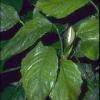 Aglaonema simplex
Aglaonema simplex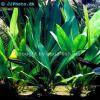 Anubias afzelii
Anubias afzelii Anubias barteri
Anubias barteri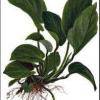 Anubias barteri “Caladiifolia” ‘1705’
Anubias barteri “Caladiifolia” ‘1705’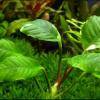 Anubias barteri “Coffeefolia”
Anubias barteri “Coffeefolia”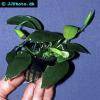 Anubias barteri “Nana”
Anubias barteri “Nana”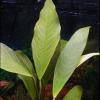 Anubias barteri v. angustifolia
Anubias barteri v. angustifolia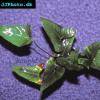 Anubias gracilis
Anubias gracilis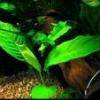 Anubias heterophylla
Anubias heterophylla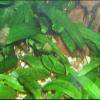 Cryptocoryne affinis
Cryptocoryne affinis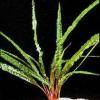 Cryptocoryne balansae
Cryptocoryne balansae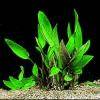 Cryptocoryne becketti
Cryptocoryne becketti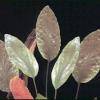 Cryptocoryne blassi
Cryptocoryne blassi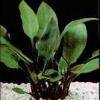 Cryptocoryne ciliata
Cryptocoryne ciliata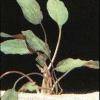 Cryptocoryne cordata
Cryptocoryne cordata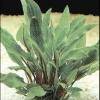 Cryptocoryne lutea
Cryptocoryne lutea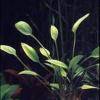 Cryptocoryne nevillii
Cryptocoryne nevillii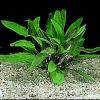 Cryptocoryne petchii
Cryptocoryne petchii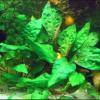 Cryptocoryne pontederiifolia
Cryptocoryne pontederiifolia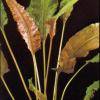 Cryptocoryne wendtii
Cryptocoryne wendtii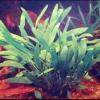 Cryptocoryne willisii
Cryptocoryne willisii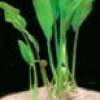 Lagenandra ovata
Lagenandra ovata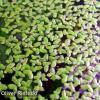 Lemna minor
Lemna minor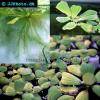 Pistia stratiotes
Pistia stratiotes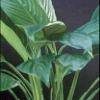 Spathiphyllum petite
Spathiphyllum petite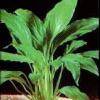 Spathiphyllum wallisii
Spathiphyllum wallisii